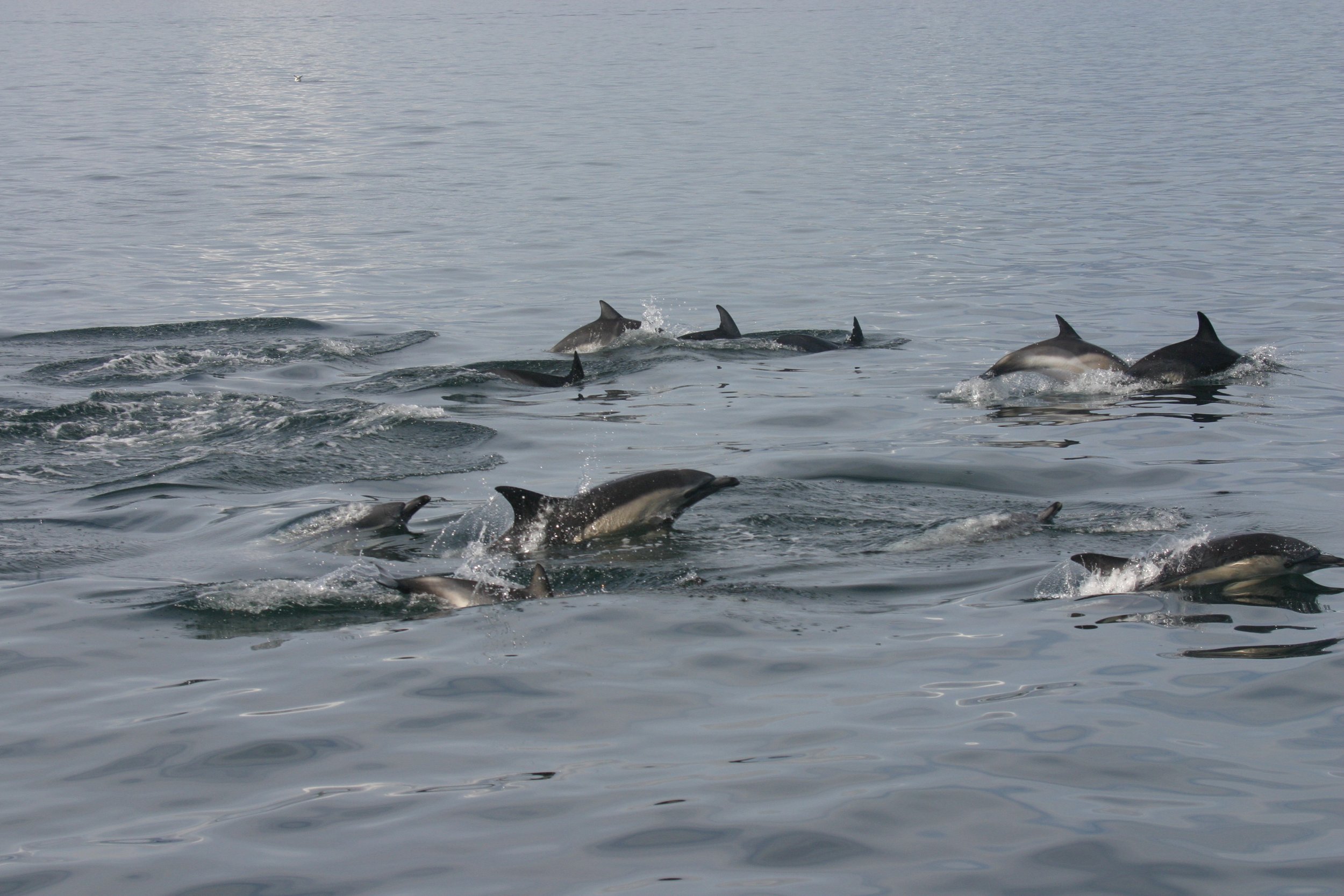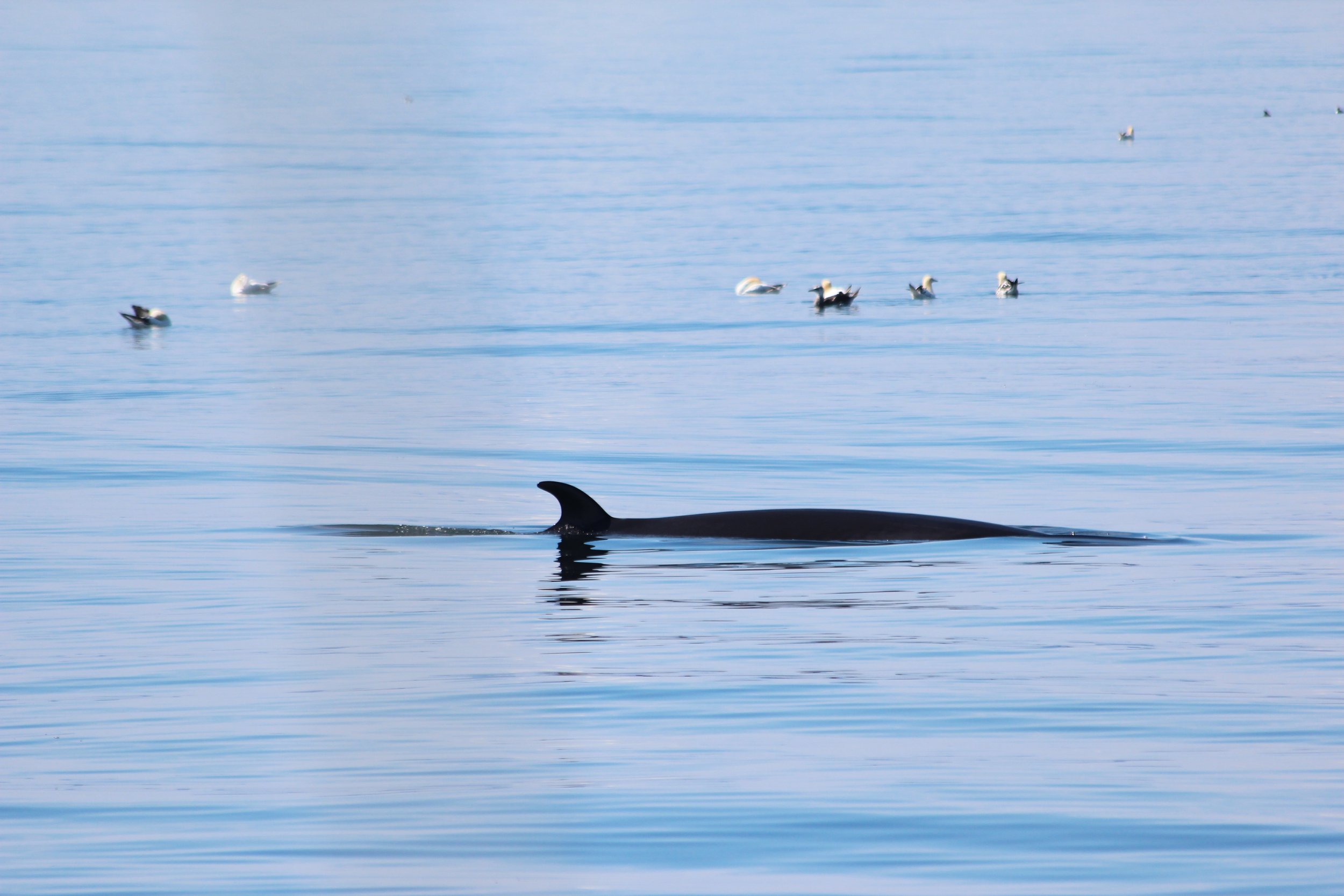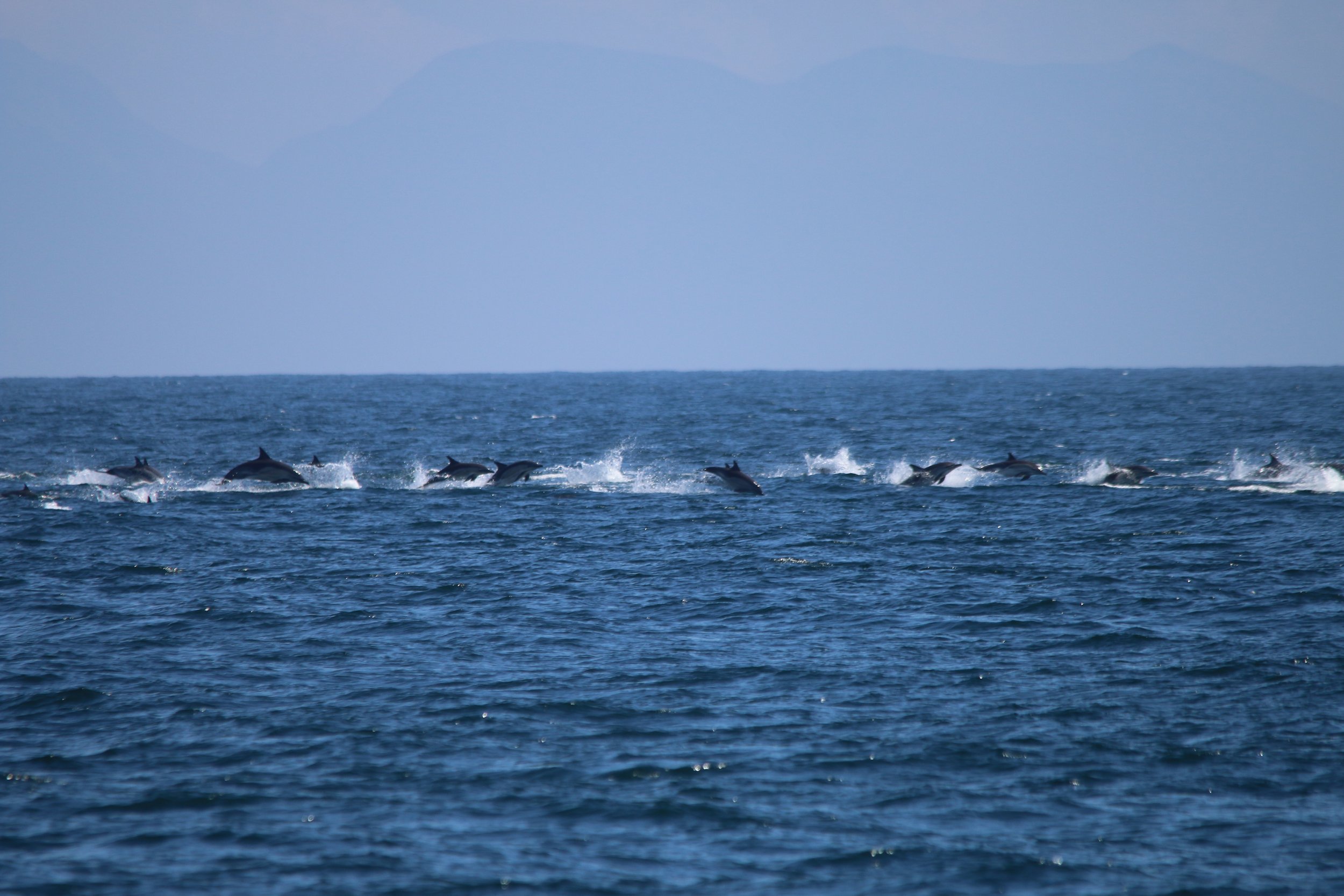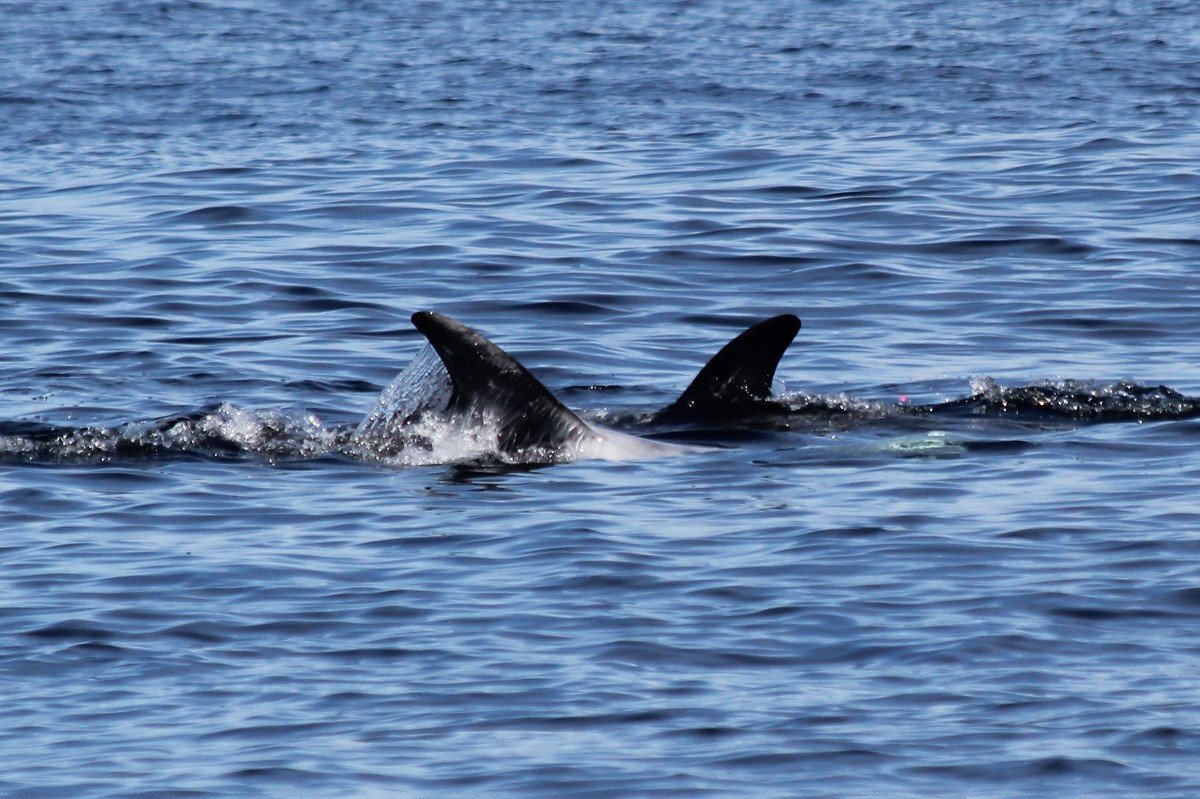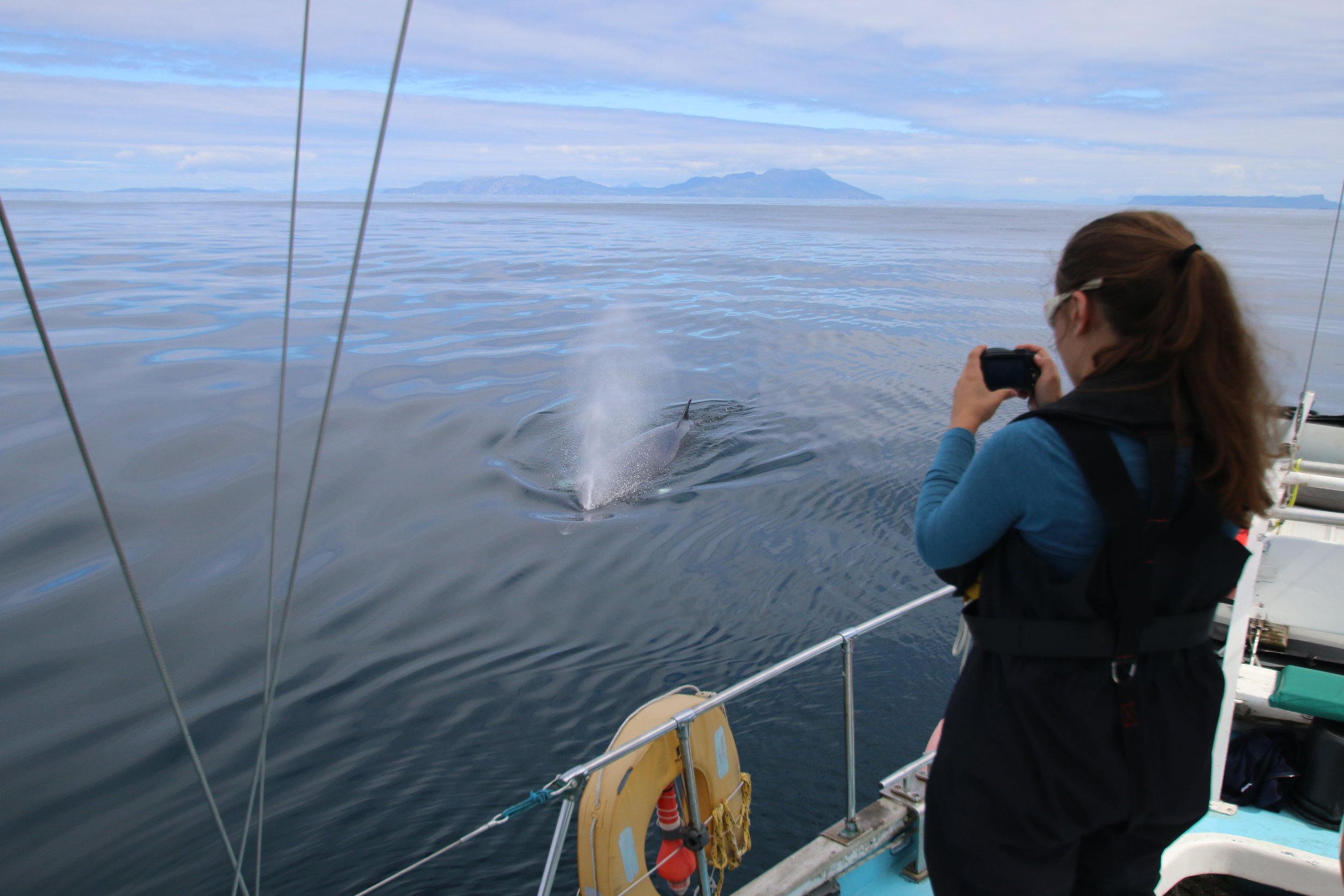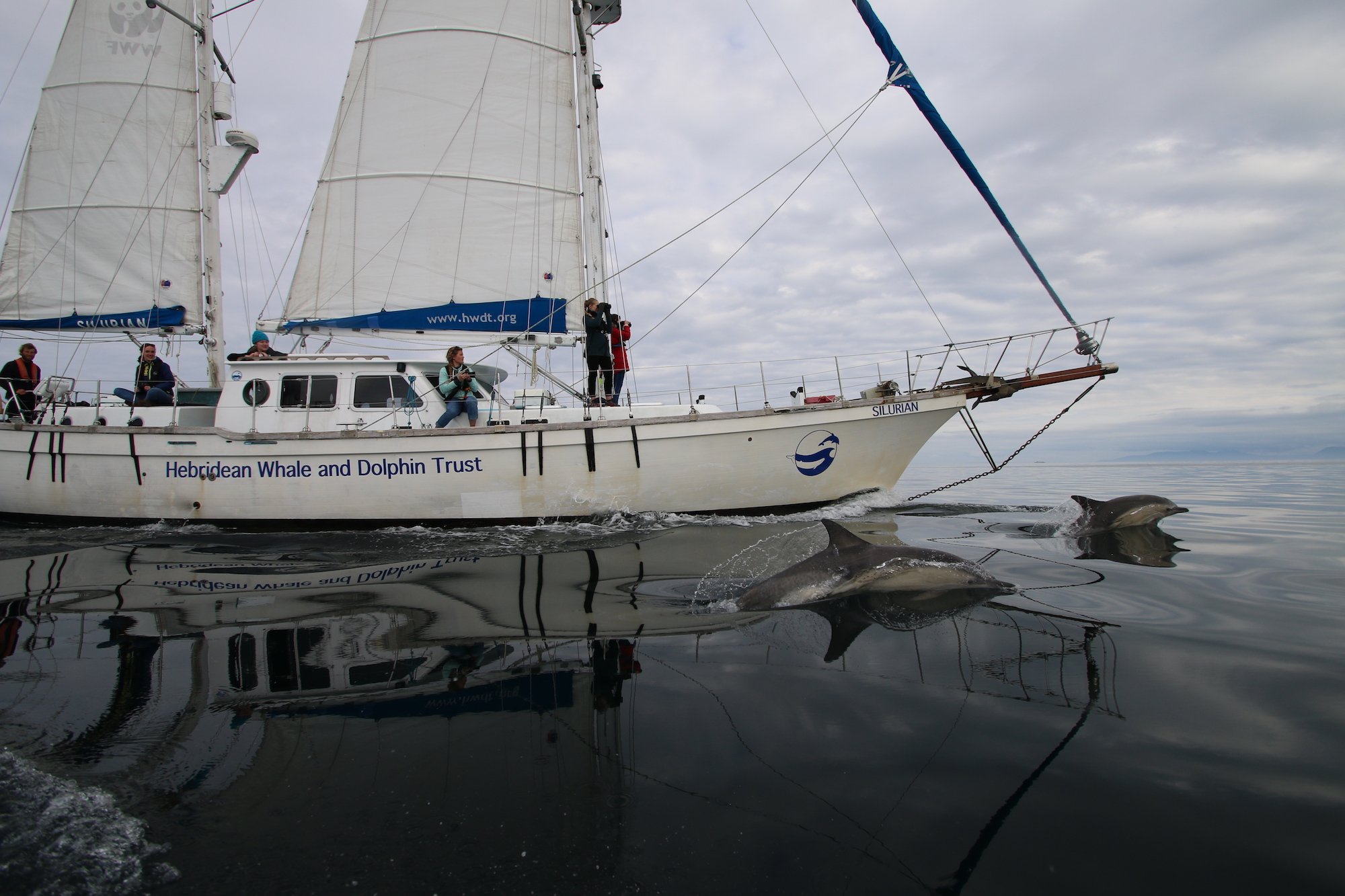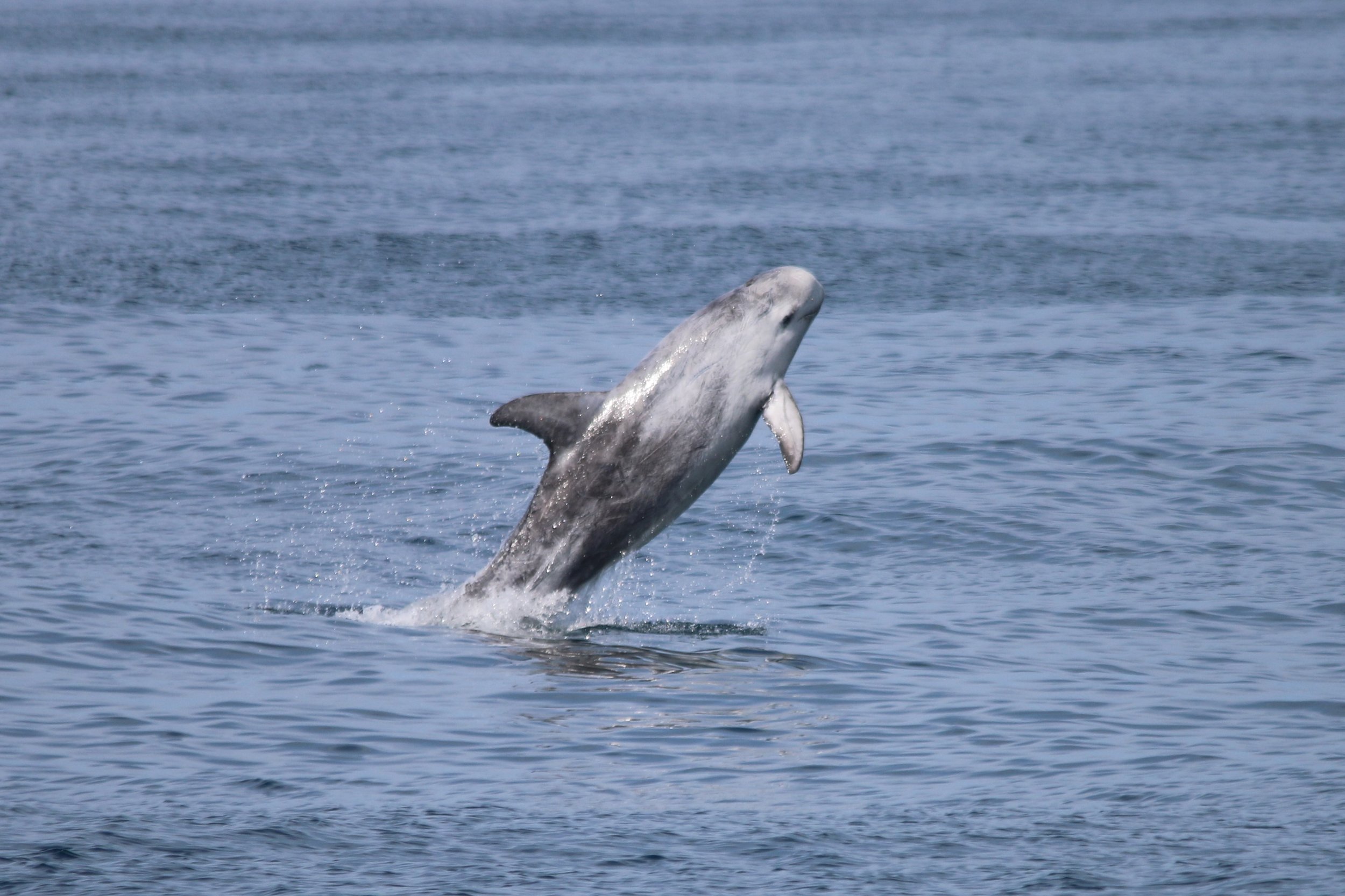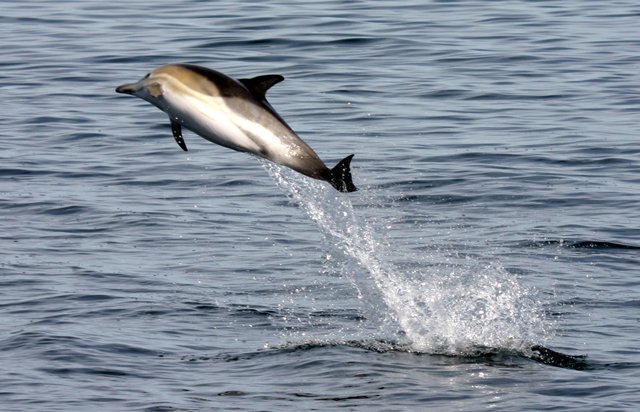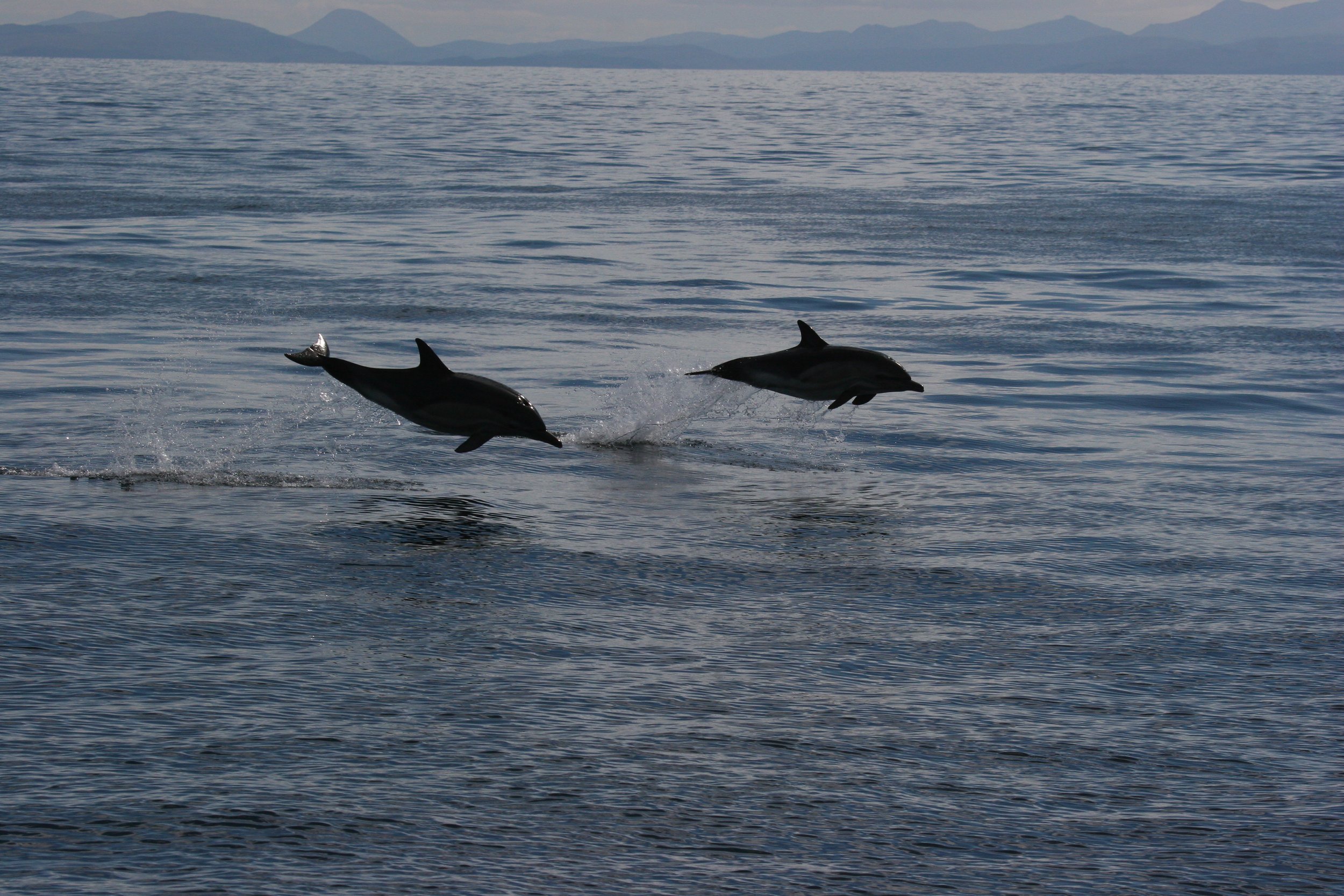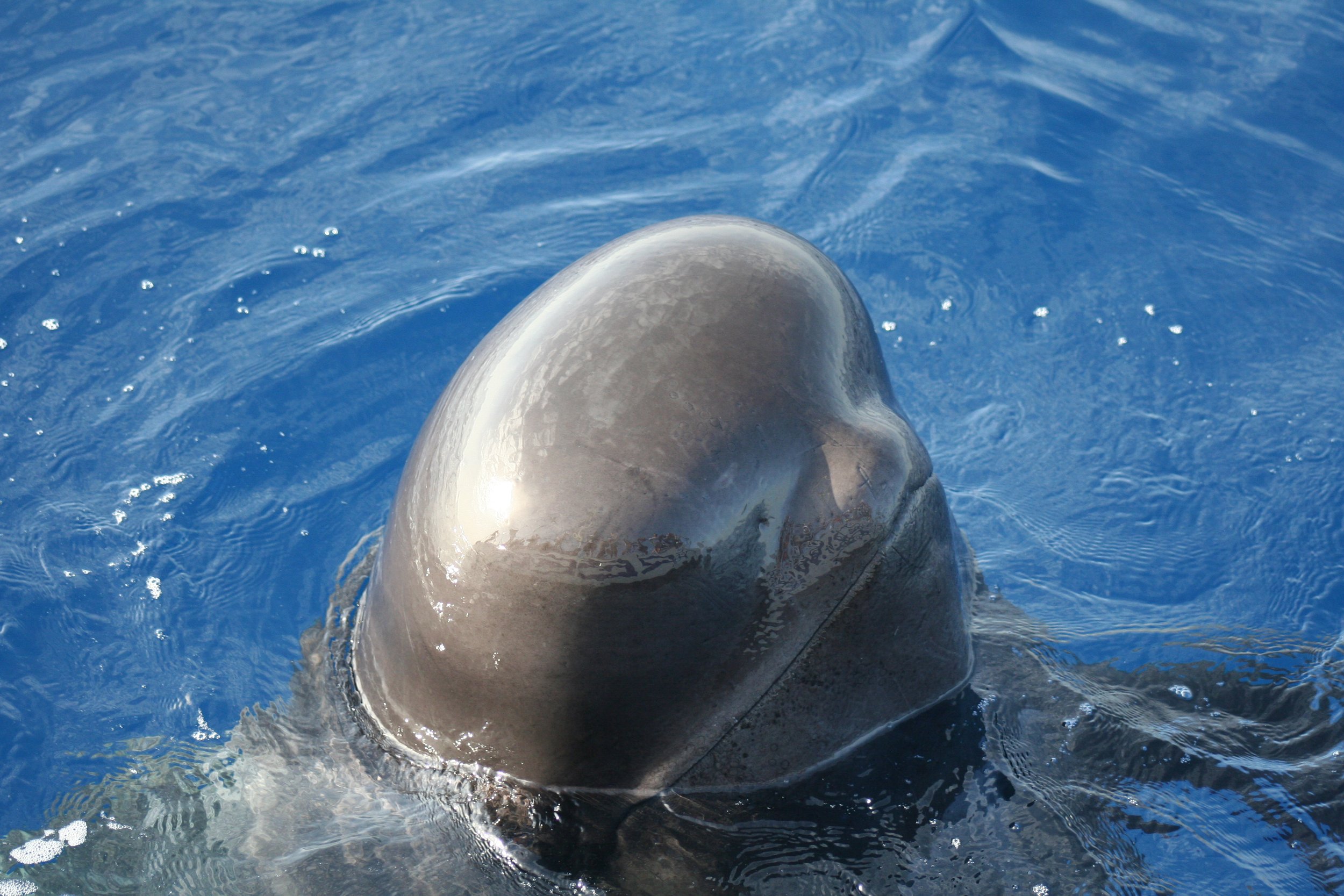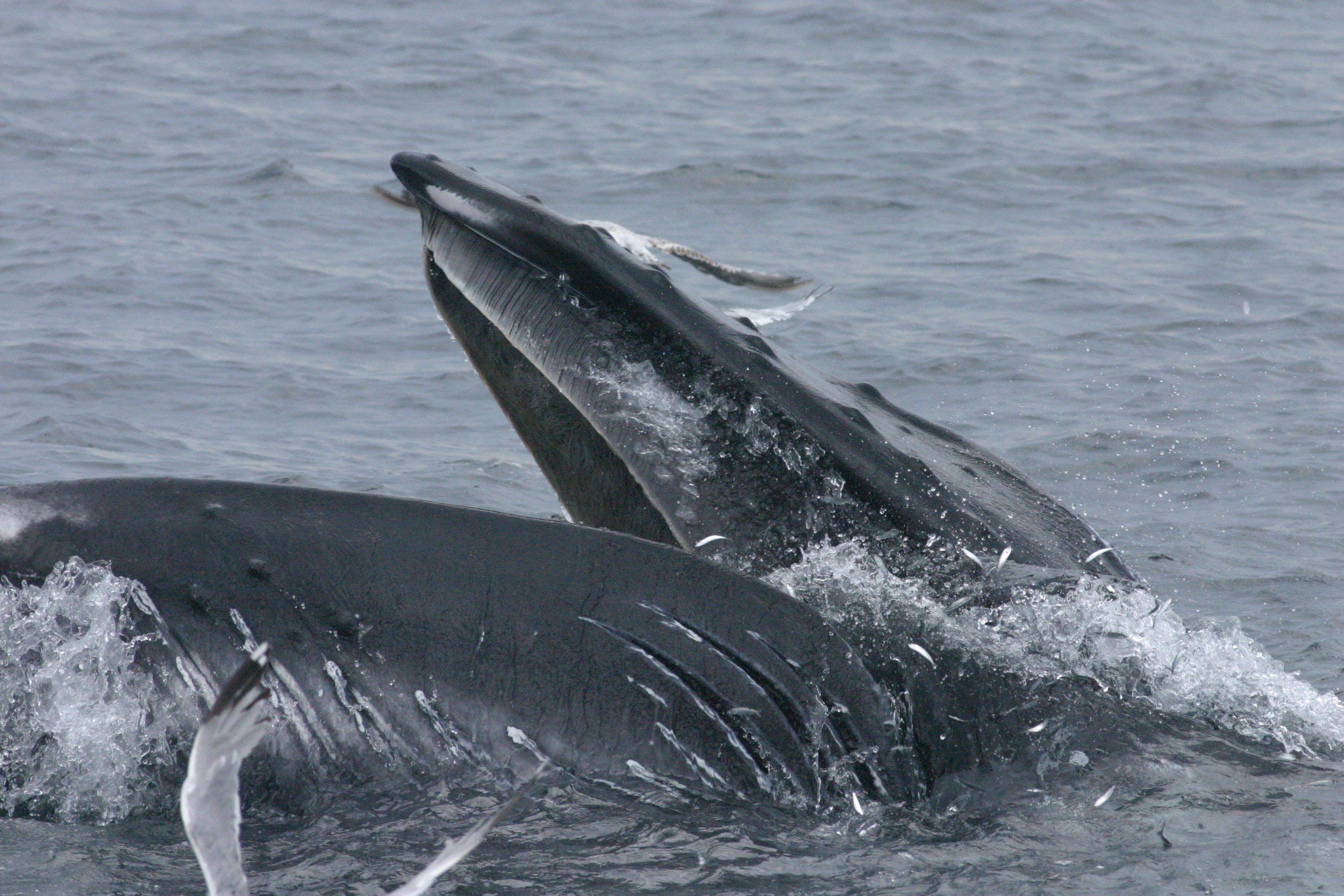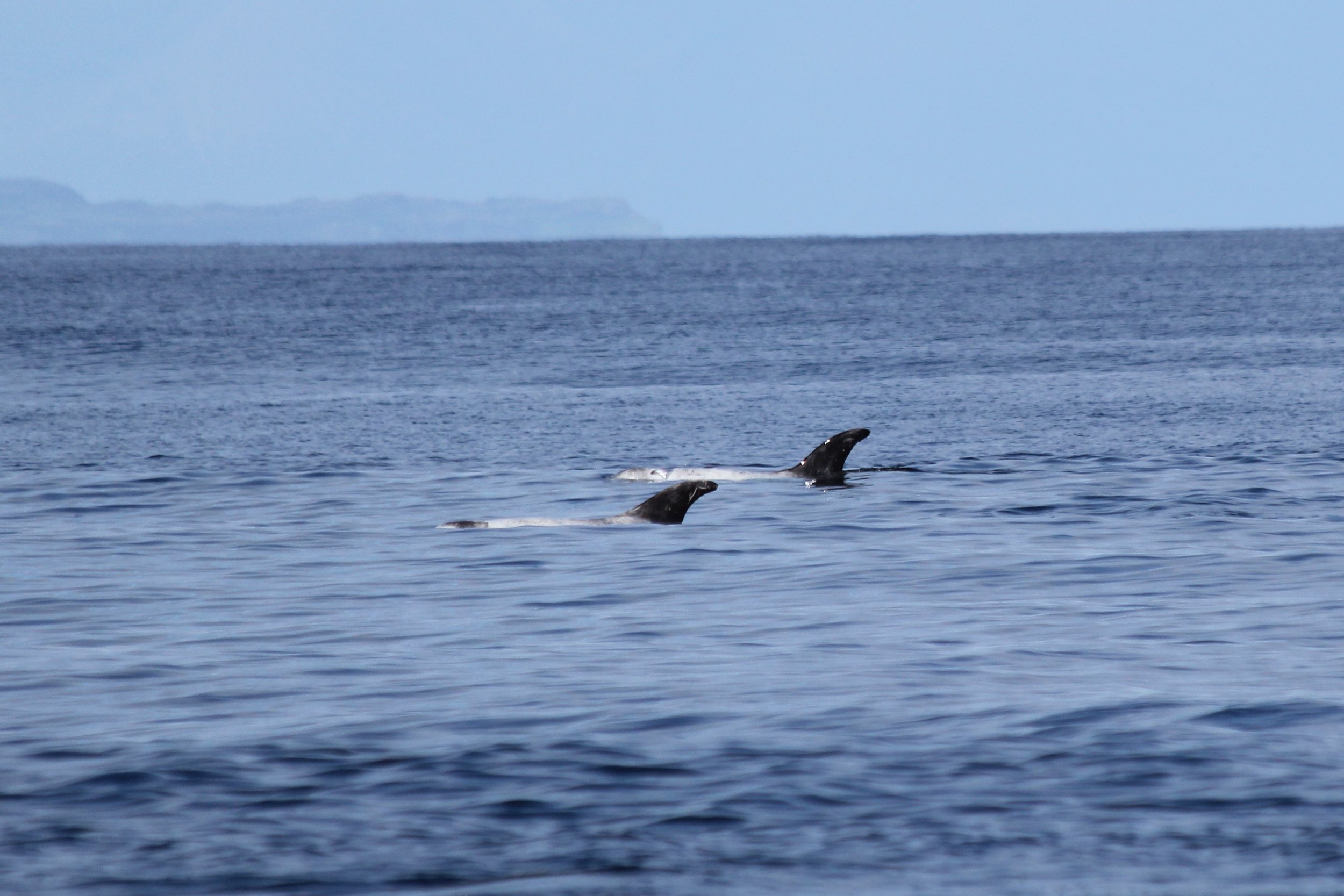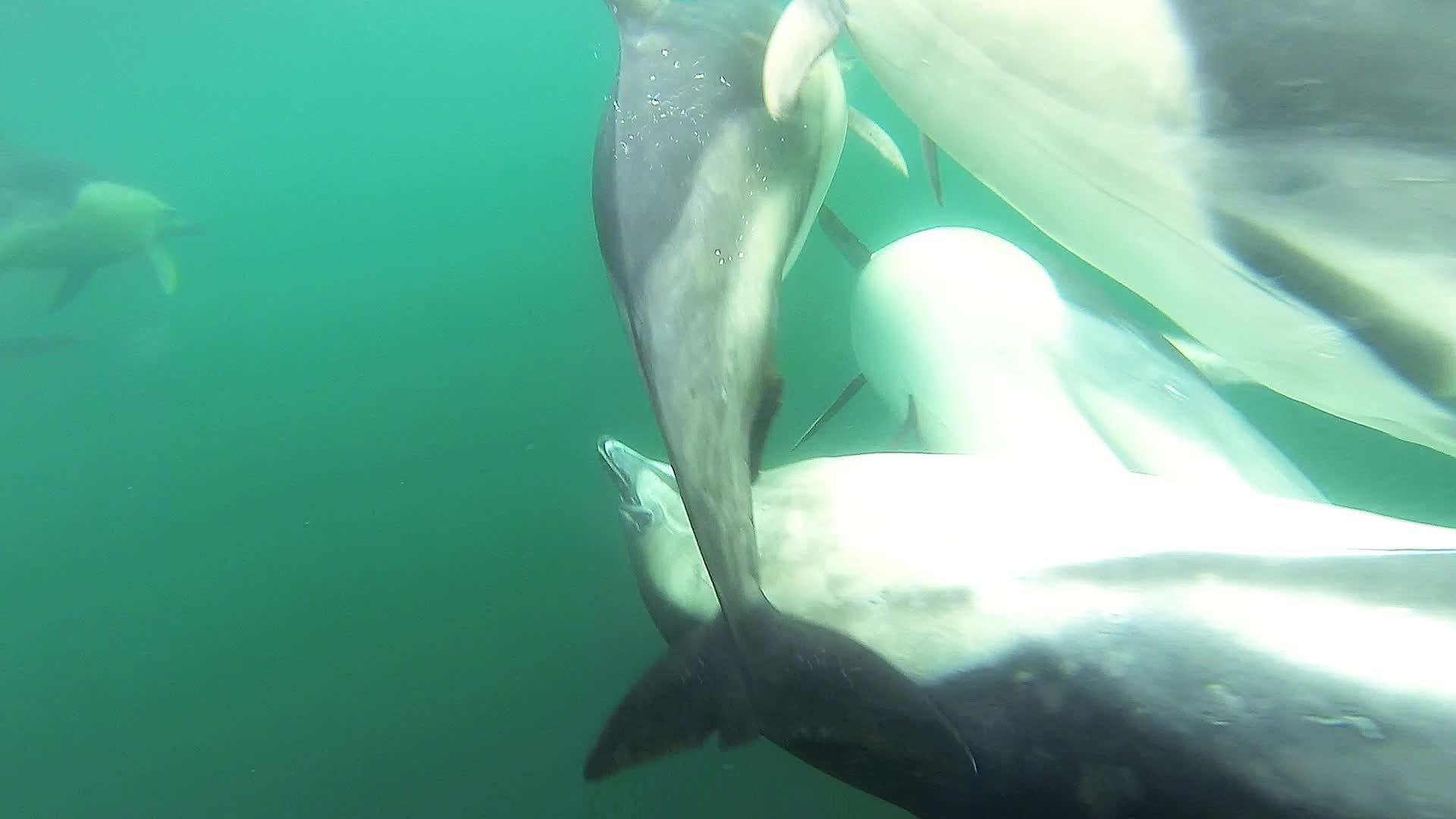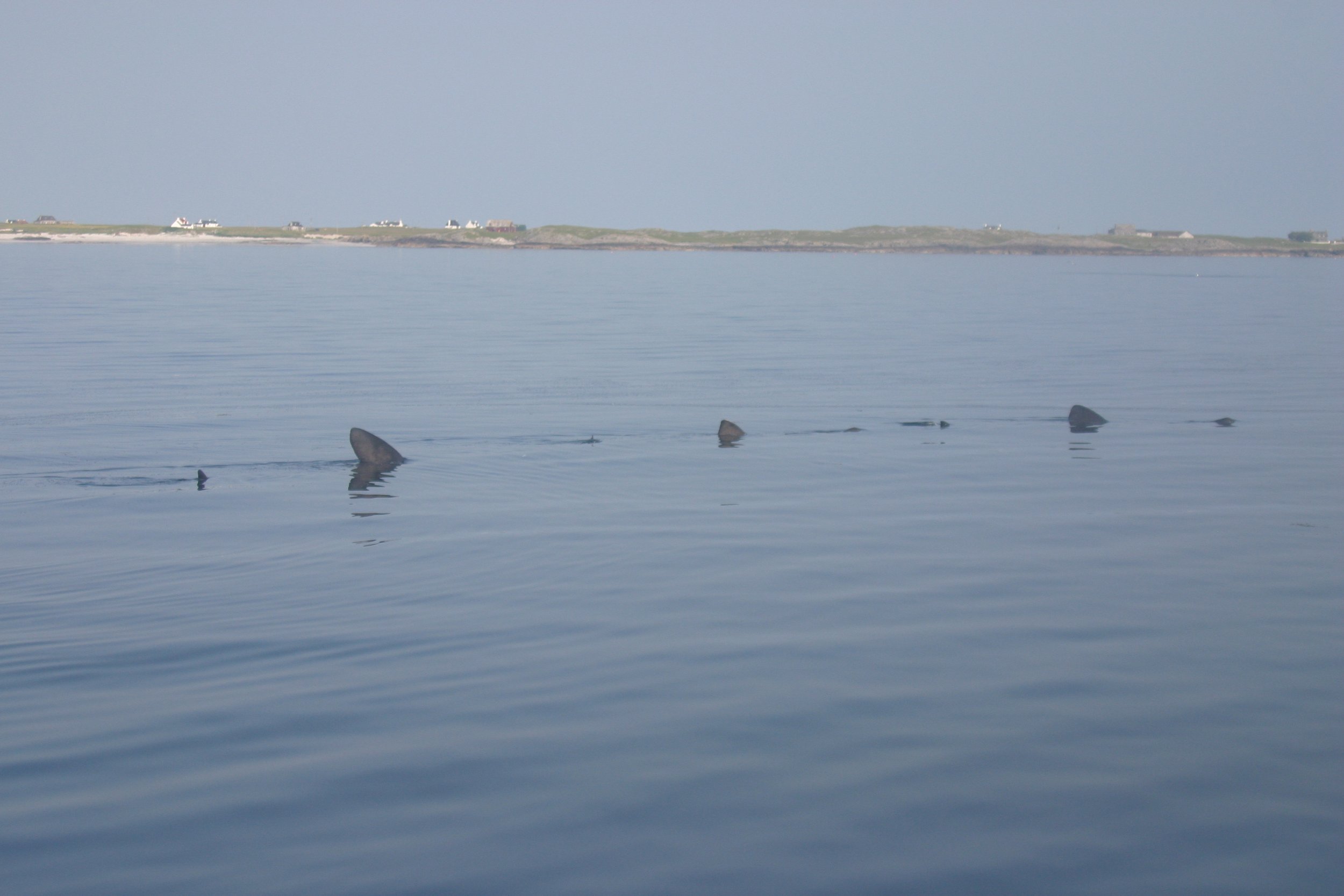How to breach, leap or porpoise your way to conclusions: Whale Track behaviours
Whale Track is a citizen science app created by the Hebridean Whale and Dolphin Trust to monitor whales and dolphins. Thousands of volunteer surveyors have contributed to our knowledge and understanding of animal distribution and behaviour in western Scotland. Caroline, our outreach volunteer for this summer season, breaks down what behaviour you may see and why it is so important to record it…
SIGHTING! You’re on a headland watch or at sea and you have spotted something – time to get on Whale Track! When reporting your sighting, the app will ask you to comment on the behaviour of the animal you’re watching. But why is this important?
Well firstly, it gives a better understanding of how whales, dolphins and porpoises are using our waters here in the Hebrides. If we can understand their behaviours and habits, we are better informed on how best to protect and conserve them. Gathering information on animal behaviour provides information on important areas for whales and dolphins – where they may be feeding regularly, mating or resting.
Behavioural information is also important when verifying sightings, particularly when there is no photograph to accompany the submission. For example, basking sharks have been recorded near Tiree displaying ‘swimming nose to tail’ behaviour – we can have a high degree of confidence in this as we know that this type of behaviour is basking shark specific.
Finally, identifying the behaviour whales and dolphins are displaying during an encounter gives the reporter a greater understanding of the species. The more we understand as individuals about these beautiful creatures, the greater appreciation we have for them – it is impossible not to have a cheesy grin across your face when you see a cetacean breach! As humans, we protect what we love and it is these privileged encounters that inspires us to make the change we want to see happen in the marine environment.
So, what do different behaviours look like? There are many different behaviours to choose from on the app, some with only small differences. Below they are ‘dolfined’ in a bit more detail…
Fast swim, slow/normal swim, travelling, milling/resting
Cetaceans in a hurry will exhibit short bursts of accelerated swimming. This type of behaviour is recorded as a fast swim and frequently displayed by common dolphins, which can travel up to speeds of 60km an hour.
If the marine mammal appears to be swimming at a normal pace this is recorded as slow/normal swimming behaviour.
When an animal, or group of animals, can be seen moving with a purpose towards a common destination, such as a boat for example, then this behaviour can be recorded as travelling. When there is no specific direction of travel, with animals often changing direction, this is recorded as milling/resting
There is the option to submit more than one behaviour when recording your sighting on the app. For example, you may witness a group of common dolphins travelling towards a boat doing a fast swim. They may also show signs of leaping during their travel – in this instance you would submit all the different behaviours. This paints a full picture of the behaviours being exhibited by the pod/individual.
Image 1: Fast swim ©Matt Brook, Image 2: slow/normal swim, Image 3: travelling ©Kerry Froud, Image 4: milling/resting
Associating with boat, bow-riding
Cetaceans are intellectual mammals and can be very curious of other marine activities. Some will even choose to interact with the boat, perhaps by rolling on their sides to look at the boat, sometimes even bumping it and swimming under and around the vessel to have a look. This type of behaviour, known as associating with the boat, is likely to be demonstrated by nosier marine mammals, such as minke whales.
Occasionally, cetaceans surf the pressure wave made by the bow of a boat, known as bow-riding. This behaviour is believed to be a form of play for cetaceans, such as common dolphins, who are well known to spot a boat from afar and travel over to ride in the wake – perhaps surfing releases some endolphins for them!
It is worth noting that it is incredibly lucky to have this kind of encounter however, not all cetaceans will want to interact with boats so it is important to respect marine mammals during an encounter. HWDT trains responsible wildlife watching practices with the WiSe training scheme to minimise disturbance to protected UK wildlife.
Associating with boat (left), Bow-riding (right)
BREACHING, LEAPING, PORPOISING, SPY-HOPPING
The joy of seeing a cetacean out of the water is spectacular. There are varying ways that we describe this behaviour depending on the extent to which the cetacean exits and re-enters the water.
Witnessing a cetacean breaching involves a leap clear of the water, where more than 40% of the animals body is clear of the water, landing back into the water on their back, front or side.
When seen jumping clear out of the water and re-entering nose first - this behaviour is leaping.
When the cetacean is leaping in shallow arches, but this behaviour is seen in conjunction alongside associating with travelling or fast swimming, this will be recorded as porpoising. Funnily enough, it is rare to see a porpoise porpoising.
If the animal can be seen to positions itself vertically in the water and swims upwards raising its head beyond the surface of the water, usually so that its eye level is above the water, this behaviour is known as spy hopping. They hold this position for a good few seconds before going back down, perhaps they are fin-terested in what you’re up to!
Image 1: Breaching, Image 2: leaping ©Cormac Booth, Image 3: porpoising ©Nienke Van Geel, Image 4: spy-hopping ©Lauren Hartny Mills
Foraging, feeding
When a cetacean is actively hunting for food, but there is no evidence to show a catch has been made this is known as foraging.
Evidence seen of feeding, such as lunge feeding whales – involving the whale lunging at its prey at high speed from below and erupting at the surface with the throat grooves extended - or dolphins throwing fish up into the air/flipping a fish out of the water with its tail fluke.
Some species are commonly seen with associating sea birds – they too are feeding on the same fish. For example, “Manx means minke” Manx shearwaters are associated with minke whales and gannets are associated with bottlenose dolphins. Whale track asks if there are feeding seabirds present in the same section as behaviours, so please select and comment which sea birds are present.
Foraging (left), Feeding ©Clare Embling (right)
Logging
It can be tiring sometimes to be a whale or dolphin and you may witness them resting at the surface. This is known as logging and occurs when an animal is floating motionless at the surface, whilst resting.
Sexual
When cetaceans are seen belly to belly and often very active at the surface this behaviour is documented as sexual.
swimming nose to tail
Swimming in a line, nose to tail, as seen in the image. This behaviour is basking shark specific. There is no reason to state why they do this.
Image 1: logging, Image 2: sexual, Image 3: swim nose to tail travelling ©Rob Pickering
Your sightings really do make a difference, and any additional information in the comments section is greatly encouraged when submitting your encounter. Please, if you can, take photos of your sightings and upload these during your efforts.
Here in the Hebrides, we are incredibly lucky to witness some incredible sightings and behaviours. Thanks to citizen science data, such as reports on Whale Track, every day we are understanding more about the marine environment. The more we know, the better informed we are as a community of marine lovers to help deepen our understanding of Scottish whales, dolphins, porpoises and basking sharks.

